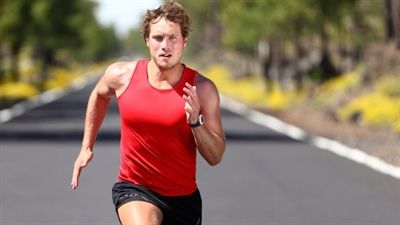
This is an interesting question and to answer it we need first to determine what the word “alter” means in this context.
We start our life as a single cell, zygote, which divides hundreds of times in order to produce the embryo. When we are born, our cells keep on dividing to produce a fully grown individual. During this period all our tissue types are formed, which consist of many cell types but, interestingly, it does not matter whether we look at a blood cell or a muscle cell, a skin cell or a neuron – all the cells in human body have identical DNA. The differences between the cells are caused not by differences in the DNA sequence (i.e. differences in the order of the letters – A, T, G or C – which make up DNA) but rather by differences in gene expression. This means that in, say, blood cells, there are certain genes expressed which are not expressed in skin cells (although most genes in our DNA are expressed in all the cell types). This is what makes blood cells different from skin or other types of cells.
Changes in the DNA sequence are caused by factors which are called “mutagens”. These can be environmental factors (like UV-light or X-rays), chemical factors (like asbestos, phenol or tobacco smoke) or even biological factors (like the Human Papilloma Virus). Changes in DNA sequence can also occur during the process of cell division due to poor proofreading by specific enzymes DNA in one of the daughter cells is incorrectly copied and the errors not properly corrected. Most changes in the DNA sequence are benign to us – the cell with altered DNA either dies or the changes occur in the areas which do not affect correct functioning of the genes. But in some cases, changes in the DNA sequence can cause tumours or even cancers.
Whether or not we ride a bike, go running or hiking does not cause changes in the DNA sequence of our cells. But what does exercising do to our body so we grow more muscles and loose extra weight? Recent studies have even showed that exercising positively affects our cognitive abilities. What is happening inside our body and inside our cells when we exercise?
When we exercise we cause our body to go through a severe physical stress. Intensive workout needs us to increase oxygen consumption, our heart starts working much faster, our blood vessels widen in order to let more oxygenated blood to where it is mostly need, our energy storage (glycogen in the liver, fat deposits throughout our body) begin to release more energy needed to maintain all the body functions, our body temperature rises and we need to perspire to cool it down (and to perspire we need our fat to start breaking down to release water).
The level of some of our hormones, like endorphins, increases, while production of some other hormones drops. But the most interesting thing is that the way our genes expressed during exercising changes in comparison to the rest phase. All these complicated processes mentioned above are regulated by changes in gene expression which kicks in is as soon as the body realises that it needs to start working under different, more severe, conditions. Without this we would not be able to maintain functioning of our vital organs, like the brain or heart, when exercising. Changes in gene expression, the way our genes work, this is what make the human body not only survive a stringent exercise mode but keep it working without injuries during the period of exercise and recover once it is over.
So, now, let’s come back to our original question: “Does exercising alter your DNA?” It can be answered as “no, it does not make any changes in the sequence of letters which make up our DNA” but it can also be answered as “yes, exercises cause changes in the way our DNA functions, in the way our genes work and the way our genes, which are encoded in our DNA, are expressed within the cells”.
Source: Can exercise alter your DNA?
